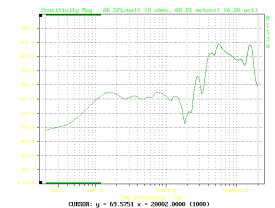
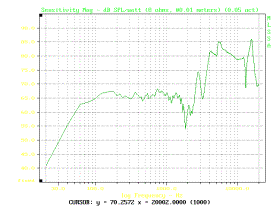
MLSSA is by no means perfect. Here are a few things to watch out, because it is not very smart to tell us what is right or wrong from a misuse measurement.
(1) MLSSA state the Frequency Response Accuracy is 1/time, but repeated measurements showed otherwise. For example, 1/5ms will give you accuracy down to 200Hz, but as measurements are repeated, only frequency starting around 1000Hz remains unchanged. Hence, beware of the MLSSA warning green line at the bottom, it is not correct.
Actually it is correct if the thing you are measuring does not have an impulse response longer than 1/time. As long as you are not chopping (window) bits off, it will be correct. For example, a big flat panel can produce down to 100Hz, that is 10ms. If I window only 5ms, which 50% is gone then we can all see it is way wrong. This is an issue not discussed in the official manual, hey more than 50% of what I write is not mentioned in the official manual.
(2) The graph on the left is smoothed using 0.2 = 1/5 octaves while the right is 0.05 = 1/20 octaves. The latter retains the curve shape far more accurate than the usual 1/3 or 1/6 type smoothing.


Take another example FFT 65536 not smooth on the left below against 65536 smoothed using 0.05 octaves on the right.
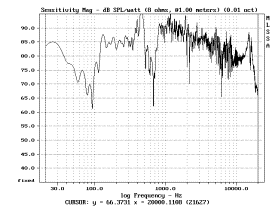
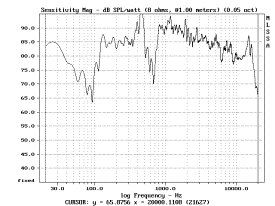
Small smoothing is required because too many points are packed in the high frequency region versus low frequency, hence difficult to see clearly what is going on. This is because the FFT transformation is scaled linearly and not logarithmically.
(4) As we know, MLSSA processes the result after measurement is made in TIME. It is a processor, not a measurer. For this, always suspect the low frequency limits even in an Anechoic Chamber, because MLSSA manuals recommends a window of 10ms, not the full 50ms. Please compare below a measurement using an SPL meter of a quiet room against misusing MLSSA.
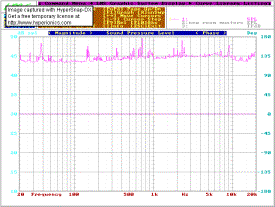
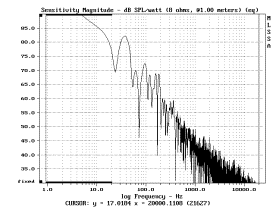
Notice when a room is quiet the frequency response is low at 45dB all over and not otherwise. The correct way to measure a room noise is something like Reverb Time measurement. The difference between an Impulse and Room response is.
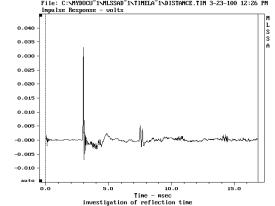
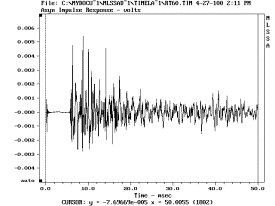
From the curve on the right, the room reverb time looks like
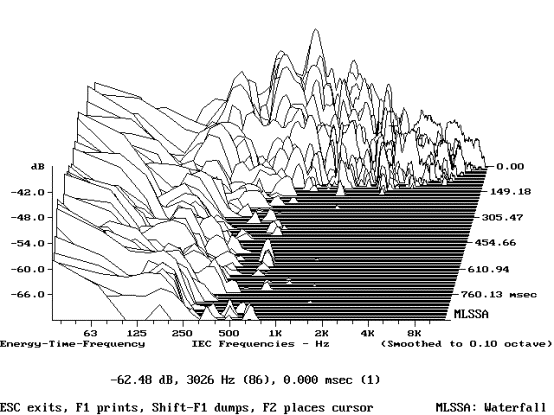
(5) Due to the office floor to ceiling height is very short. The reflections are picked up very early. Usually this leaves us around 4.5ms to play with. For this MLSSA suggest using Half-Hamming window in sacrifice for Frequency Resolutions. Comparisons showed that it is not necessary because frequencies below 1000Hz are all not trustable. Hence, stick to Rectangular window. If you donít believe me try it yourself, canít do everything for you, can I?
(6) Measurement saved in 64k time domain can be loaded in 32k or less, the later will not be loaded. This is all right because the extra information is needed for other analysis. Not normally needed for Sensitivity type.
ACOUSTICS SECTION AUDIO SECTION CAR SECTION
HOME - Technical Website for Acoustics, Audio and Car